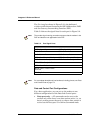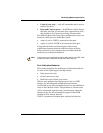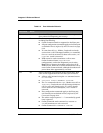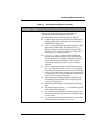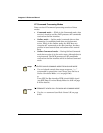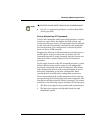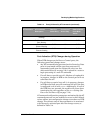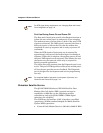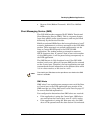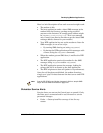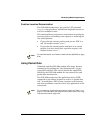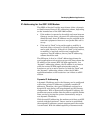
Integrator’s Reference Manual
5-16 80-99208-1 Rev. D
Note
For DTR signal timing requirements, see Changing Data and Control
Port Configuration on page 7-8.
Port Use During Power On and Power Off
The Data and Control ports provide a feedback mechanism to
inform the user when power on and power off are complete.
The modem powers on when either or both of the ports’ DTR
signals are asserted. The DSR signal is asserted on either or
both active ports to inform the user that the modem has
completed its start-up sequence and is ready to process AT
commands.
When the DTR signals of both ports are de-asserted for
approximately one second, the modem begins its shutdown
sequence. When this is complete, the modem powers off and
the ports’ DSR signals are de-asserted. This informs the user
that power may be removed, which may be required in
battery-powered applications.
The above discussion assumes that the Diagnostic port is not
active. This port’s DTR signal does affect power on and power
off, but the port provides no user feedback. The Diagnostic
port is designed for development and service-programming
use only.
Note
For complete details of the power on and power off process, see
Power-On and Power-Off on page 7-18.
Globalstar Satellite Service
The QUALCOMM Globalstar GSP-1620 Satellite Data
Modem offers full duplex (FDX) transmit and receive
capabilities at 9600 bps via the Globalstar satellite
constellation, and uses QUALCOMM’s CDMA digital
technology for reliability.
The Globalstar Air Interface (GAI) is based on a modified
(proprietary) IS-95A standard adapted for Mobile Satellite
System (MSS) operations:
• Forward Link (Modem Receive): 2484.39 to 2499.15 MHz



